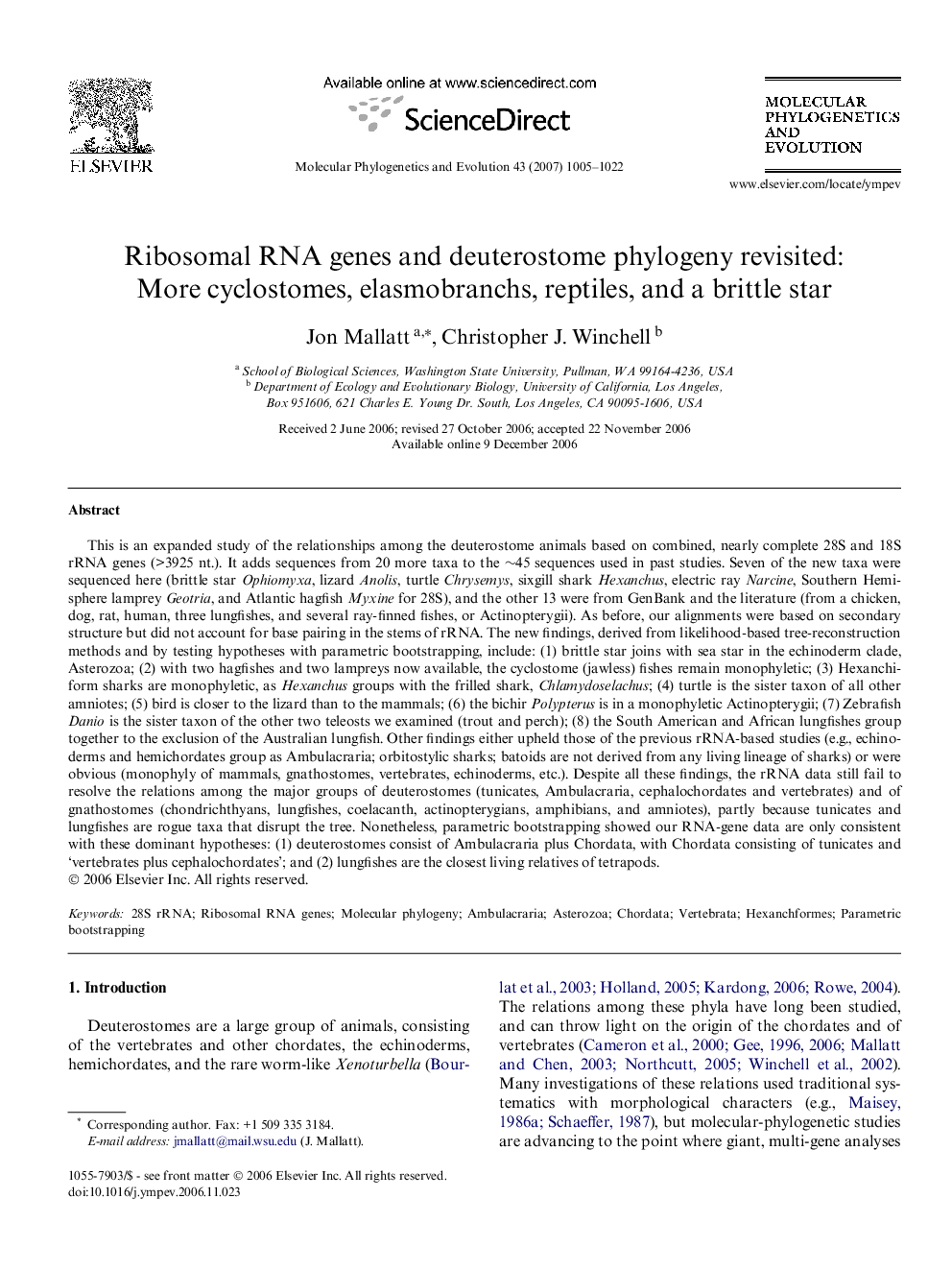| کد مقاله | کد نشریه | سال انتشار | مقاله انگلیسی | نسخه تمام متن |
|---|---|---|---|---|
| 2835619 | 1164348 | 2007 | 18 صفحه PDF | دانلود رایگان |

This is an expanded study of the relationships among the deuterostome animals based on combined, nearly complete 28S and 18S rRNA genes (>3925 nt.). It adds sequences from 20 more taxa to the ∼45 sequences used in past studies. Seven of the new taxa were sequenced here (brittle star Ophiomyxa, lizard Anolis, turtle Chrysemys, sixgill shark Hexanchus, electric ray Narcine, Southern Hemisphere lamprey Geotria, and Atlantic hagfish Myxine for 28S), and the other 13 were from GenBank and the literature (from a chicken, dog, rat, human, three lungfishes, and several ray-finned fishes, or Actinopterygii). As before, our alignments were based on secondary structure but did not account for base pairing in the stems of rRNA. The new findings, derived from likelihood-based tree-reconstruction methods and by testing hypotheses with parametric bootstrapping, include: (1) brittle star joins with sea star in the echinoderm clade, Asterozoa; (2) with two hagfishes and two lampreys now available, the cyclostome (jawless) fishes remain monophyletic; (3) Hexanchiform sharks are monophyletic, as Hexanchus groups with the frilled shark, Chlamydoselachus; (4) turtle is the sister taxon of all other amniotes; (5) bird is closer to the lizard than to the mammals; (6) the bichir Polypterus is in a monophyletic Actinopterygii; (7) Zebrafish Danio is the sister taxon of the other two teleosts we examined (trout and perch); (8) the South American and African lungfishes group together to the exclusion of the Australian lungfish. Other findings either upheld those of the previous rRNA-based studies (e.g., echinoderms and hemichordates group as Ambulacraria; orbitostylic sharks; batoids are not derived from any living lineage of sharks) or were obvious (monophyly of mammals, gnathostomes, vertebrates, echinoderms, etc.). Despite all these findings, the rRNA data still fail to resolve the relations among the major groups of deuterostomes (tunicates, Ambulacraria, cephalochordates and vertebrates) and of gnathostomes (chondrichthyans, lungfishes, coelacanth, actinopterygians, amphibians, and amniotes), partly because tunicates and lungfishes are rogue taxa that disrupt the tree. Nonetheless, parametric bootstrapping showed our RNA-gene data are only consistent with these dominant hypotheses: (1) deuterostomes consist of Ambulacraria plus Chordata, with Chordata consisting of tunicates and ‘vertebrates plus cephalochordates’; and (2) lungfishes are the closest living relatives of tetrapods.
Journal: Molecular Phylogenetics and Evolution - Volume 43, Issue 3, June 2007, Pages 1005–1022